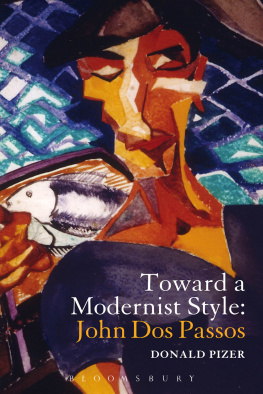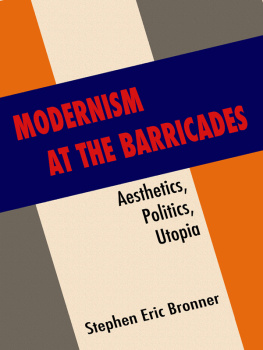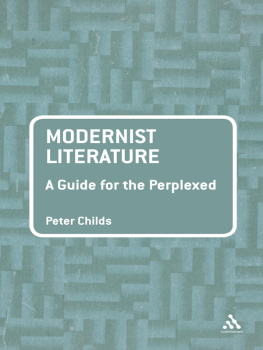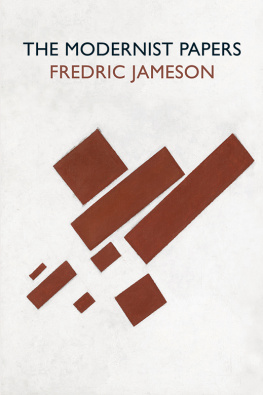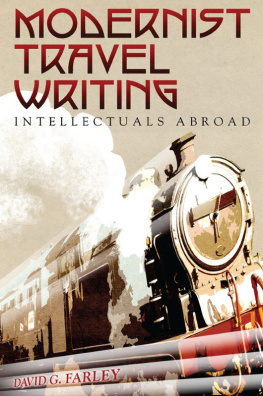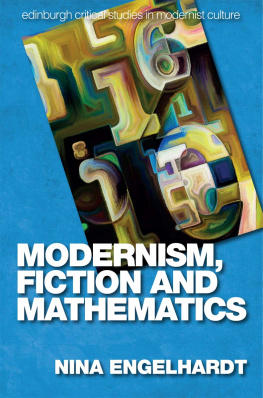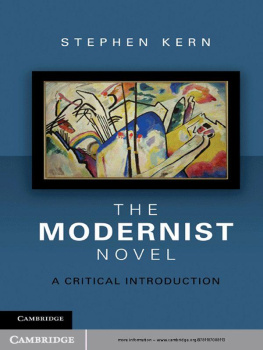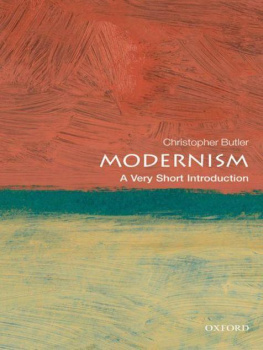RE-COVERING MODERNISM
To My Parents
For Filling My Life with Books
And Love
Re-Covering Modernism
Pulps, Paperbacks, and the Prejudice of Form
DAVID M. EARLE
University of West Florida, USA
ASHGATE
David M. Earle 2015
All rights reserved. No part of this publication may be reproduced, stored in a retrieval system or transmitted in any form or by any means, electronic, mechanical, photocopying, recording or otherwise without the prior permission of the publisher.
David M. Earle has asserted his moral right under the Copyright, Designs and Patents Act, 1988, to be identified as the author of this work.
Published by
Ashgate Publishing Limited
Wey Court East
Union Road
Farnham
Surrey, GU9 7PT
England
Ashgate Publishing Company
Suite 420
101 Cherry Street
Burlington
VT 05401-4405
USA
www.ashgate.com
British Library Cataloguing in Publication Data
Earle, David M.
Re-covering modernism: pulps, paperbacks, and the prejudice of form
1. Modernism (Literature)
I. Title
809.9112
Library of Congress Cataloging-in-Publication Data
Earle, David M.
Re-covering modernism: pulps, paperbacks, and the prejudice of form / by David M. Earle.
p. cm.
Includes bibliographical references.
ISBN 978-0-7546-6154-2 (alk. paper)
1. Modernism (Literature) I. Title.
PN56.M54E27 2009
809.9112dc22
2008033888
ISBN: 9780754661542 (hbk)
ISBN: 9781472471819 (ebk-PDF)
ISBN: 9781472471826 (ebk-ePUB)
Contents
List of Figures
Acknowledgments
The idea of this book started, I must believe, long ago with me lying on the carpet in my fathers library, leafing through the pages of Tony Goodstones book on the pulps. I couldnt have been more than eight or nine years old, but I remember the fascination that the sensational, colorful, often gruesome but always exciting cover illustrations held for me. I was soon voracious for Edgar Rice Burroughs, Robert E. Howard, H.P Lovecraft; I collected their paperbacks, early Grosset and Dunlap reprints, and eventually their pulp magazines. And as I grew older I ranged wider, into Hemingway, Fitzgerald, and eventually Joyceall under the quiet influence of my fathers library and my mothers indulgence. Hence it is for them that I must dedicate this book for instilling in me the passion for reading, the academic hunger, and the somewhat maddening fetishes of a true collector. But most of all, for the unceasing love and support and faith that allowed them to never dictate, but let my passion lead. And I am of course indebted to the rest of my family: my sister and brother; to my grandparents who are sorely missed; to Brisa Roche; Scott Bakoss, Jamie DiPietro, and Luca. And Monica.
Early on, Patrick McCarthy, Zack Bowen, Anthony Barthelemy, and Brandy Kershner were all invaluable due to their insight, their patient and particular readings, and their enthusiasm. Ann Ardis also gave me wonderful advice and suggestions. Ira Nadel, Jane Lewty, Robert Scholes, Ron Corthell, Robert Trogdon, Adam McKible, Suzanne Churchill, Bill Brockman, Mary Chapman, Sharon Hamilton, Jim LeBlanc, and Cheryl Hindrichs all helped along the way by sharing academic insight or a drink or both. Alison Kelly helped with some photos and quite a bit more. For support and understanding I must thank Bridget Haas and Rochelle Verchick, Johnny Evers and Marilyn Herschman, and, of course, Emily Vera who has remained a steadfast friend through it all. And thanks go to the great bookman and friend, Mike Zubal (www.zubalbooks.com), whose generosity with books and a fine meal or two inspired quite a bit of literary insight. Thank you all.
In the pulp world, I would like to thank John Gunnison, Doug Ellis, Alfred Jan, and the late, great Sheldon Jaffery. The UCLA Special Collections was fruitful during the early stages of research. I am indebted to Allen Hemlock at Else Fine Books for the scan of the Bantam Gatsby dust jacket.
Introduction
Mans Magazine is a typical example of the mid-century mens adventure magazine, a genre known for sensational color covers that usually featured men or scantily clad women being attacked by baboons, Nazis, or more scantily clad women. The December 1961 issue is no exception (). A portrait painting of Field Marshall Kesselring, The Nazi Butcher of Rome, glares from its cover, complete with warts and beads of sweat. In the background shirtless male prisoners are being gunned down by Nazi guards. The headline reads 10 Italians Must Die For Every German. The rest of the magazine substantiates the covers sensationalism. Besides the usual ads for stag films, correspondence schools, and hair tonics, there are stories on jungle survival, Brigitte Bardot, ways to improve ones sex life, and hidden among these is James Joyces short story Two Gallants, replete with suggestive illustration and the tagline: She made love willingly, but he and his pal wanted more.
The sensational connotations of this version of Two Gallants might surprise those familiar with the canonized reading of the story as being more about economics and Dublin homo-social behavior rather than risqu sexuality. Considering Joyces reputation as the flagship of modernism, it is surprising that he is appearing in such a venue at all. In actuality, Joyces appearance here was really not so strange for he made numerous appearances in similar magazines throughout the 1950s. The first issue of Nugget magazine (Dec. 1955) republished The Boarding House. There were articles about him in magazines such as Debonair (Feb. 1961), or about Ulysses such as Modern Mans Classic Battle over a Sex Classic (March 1957). The example of Two Gallants is a bit more extreme since Mans Magazine is lower on the cultural scale from such pseudo-literary Playboy knockoffs, but Joyce wasnt the only highbrow author to appear in these magazines; they were liberally peppered with stories by modernists: Gent Magazine featured Faulkner, John OHara, Huysman, and even Jean Paul Sartre; Escapade featured S.J. Perelman, William Soroyan, Somerset Maugham, and Jack Kerouac; The Dude featured D.H. Lawrence, Farrell, Faulkner, Budd Schulberg, and Robert Lowry; High featured Farrell and Pierre Louys; the list goes on. Other authors that appeared regularly were Nelson Algren, Norman Mailer, Erskine Caldwell, Ben Hecht, and Paul Bowles. Many magazines also featured articles about famous literary figures: not only Joyce, but Faulkner, Henry Miller, DeMaupassant, Lawrence, and Oscar Wilde as well.
These stories and articles are interspersed with pictorial features that tie into the risqu nature of modernist art, such as the premiere issue of Nuggets articles The Eternal Idol, about famous erotic sculptures like Rodins The Kiss, and Modern Art for the Modern Man, which counterpoints nude pinups with paintings by Renoir and Modigliani. These articles rely upon, or at least belie, a certain fascination with the dynamics of modernism. This use of highbrow art and authors was pragmatic, giving such magazines cultural capital to fight censorship, but it also parallels how modernist works often relied and profited by notoriety and sensationalismthe popularity and canonization of Ulysses and Lady Chatterlys Lover are the obvious examples. Furthermore, modernist pieces in this context, like Two Gallants and The Boarding House, recapture the risqu nature they held at their original publication, lost in their usual sanctioned surroundings of academic anthologies or editionsindeed,
Next page

